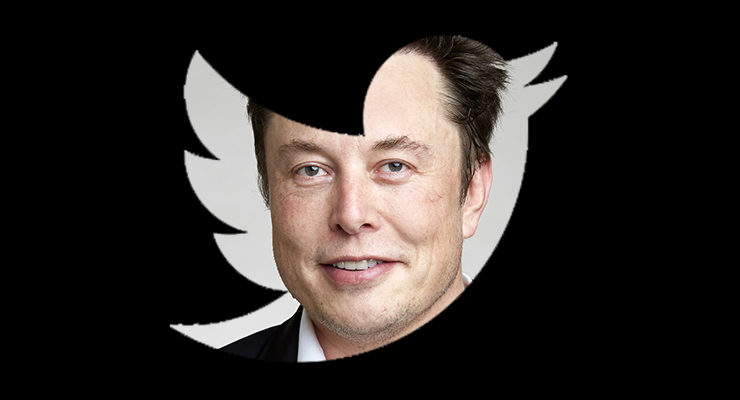
Elon Musk has wasted no time in making drastic changes to Twitter. A week after the deal closed to buy the company, Musk laid off half of its global workforce including the majority of the Twitter Australia team, as reported by Nine papers.
He’s also expanding the platform’s verification system — a feature that gave accounts belonging to people of public interest what was anecdotally called a “blue tick” to indicate their authenticity — to anyone who will stump up US$8 monthly for Twitter Blue (which also includes a handful of other perks). Social media experts have warned this change could imperil the platform by allowing more misinformation and scams.
So, how will it change? There have been endless attempts to decipher Muskology as told through the mercurial billionaire’s tweeting about vague free speech platitudes and (sometimes literal) shitposts. Even before Musk had been officially handed the keys, some had flocked to the platform in anticipation of the new regime; others fled. Major advertisers have paused their spending as they wait to see how the platform changes. His track record of inflated promises, backflips and contradictions makes it hard to predict his next move, let alone sketch out a coherent ideology.
The key to understanding Musk’s plans for Twitter is one simple number: US$1,000,000,000. That’s reportedly the amount that Twitter must now find to pay the annual interest on the loans Musk took out to buy the company.
Historically, Twitter has never made a lot of money. The company only turned a modest profit in two out of the past 10 years of operation. Now, Musk has to find US$1 billion on top of operating costs just to service the US$13 billion in loans taken out to pay for the company’s (rather inflated) price tag of US$44 billion. For context, last year the company brought in US$630 million in operating cash flow and paid about US$50 million in interest.
That’s an enormous additional sum of money just to keep the company afloat. And if the stakes of bankrupting a crucial platform weren’t already enough, Musk’s loans are reportedly borrowed against his Tesla stock, meaning any failure to pay could also imperil his hold over the electric car company.
In short, Musk has a lot riding on being able to transform a social media money pit into an ATM amid increasingly gloomy economic conditions. That’s why he’s willing to fundamentally alter the platform’s mechanics and fire crucial staff — not because of ideology but out of desperation.
Whether you believe Musk when he says he bought Twitter to “help humanity” or because he’s a billionaire who loves the attention the platform has given him, it’s clear he valued what Twitter was. Ironically, his decision to buy the company will fundamentally change his favourite social media platform — if it survives, that is.








Reportedly this
Reportedly that
Plenty of commentary
Rarely a fact.
Or you could think about the real-world issues around the acquisition of evidence. Too much effort? Fire off a four-line whinge instead.
As opposed to a two-line whinge about another commenters four-line whinge?
The difficulties that lie ahead for Musk and twitter are heavily underlined in the media however there doesn’t seem to be much perspective provided in light of Musk’s existing track record.
Perhaps the appropriate question is what is more daunting: starting a successful electric car company from scratch, starting a successful space rocket company from scratch, etc, or fixing Twitter?
To be fair, dealing with Twitter is going to be a challenging task. However in comparison to the first two mentioned above, Twitter is going to be a cakewalk.
But he didn’t start either of those
?? Louder for the people in the back. Exactly, he bought into Tesla and Space X.
And turned them around.
For all his many and varied flaws, it’s really quite stupid to argue that Musk just “bought into”, and thus contributed nothing to taking Tesla and SpaceX from essentially nothing to being major forces in the world. Lots of other people contributed (particularly Shotwell at SpaceX), but Musk did a hell of a lot more than just “buy into” them.
Whether he can do the same with Twitter is a different question – I suspect not, but not because Musk is a do-nothing investor, in fact probably the opposite. Twitter isn’t an engineering company, the challenges are very different – in particular, finding technical solutions isn’t going to be key to making it pay for itself.
And is it a fact that Twitter needed fixing?
It’s fascinating that Musk hasn’t been able to resist tweeting lies and conspiracies when he needs to keep and attract advertisers. I wonder if he realises how very different this new business environment is to those he has been engaged in more recently?
Musk diehard fan boys apparently giving you down votes for this valid comment.
’twas expected. Crikey has its share of conspiracists and the like.
Or, perhaps they are employees of Putin’s Chef? Once the Victorian Liberal Party embraced the far right, it opened itself up to all manner of deeply problematic people.
Why did Musk really buy Twitter? Clearly not to make a profit.
Nor did he need to own Twitter to receive attention for what he says on that platform.
The only advantage to owning Twitter is that he gets to censor or change the rules that determine what other people can and can’t say.
What then, is Musk’s agenda?
What does he stand to gain from allowing more Trumpian discourse to flourish on the platform?
Some scary analysis here: https://davetroy.medium.com/no-elon-and-jack-are-not-competitors-theyre-collaborating-3e88cde5267d
The TL;DR of which is basically that Libertarians want to destroy the world to save it.
This bloke watched on as the most powerful economy in the world just printed money when large financial instituitions made appalling business decisions, this raised what it cost to buy every house in the world[pretty much], Trump became president being bailed out of bad business decisions.
The value of money is a completely different animal when you’re a mega billionaire and he has actually made something useful, electric cars for the quite well off.
Reality and the rules just seems to bend to fit the outcome, it’s probably that there will be more costs associated with using the internet itself , the real trickle down economics, on a rich mans whim.
Too Big to be Effed.
Elon wouldn’t be such a dope if media ownership wasn’t allowed to be a propaganda machine for vested interests, not only does it mess with the little peoples heads , it apparently infects the mega wealthy also, who are equally as vulnerable, in his case.